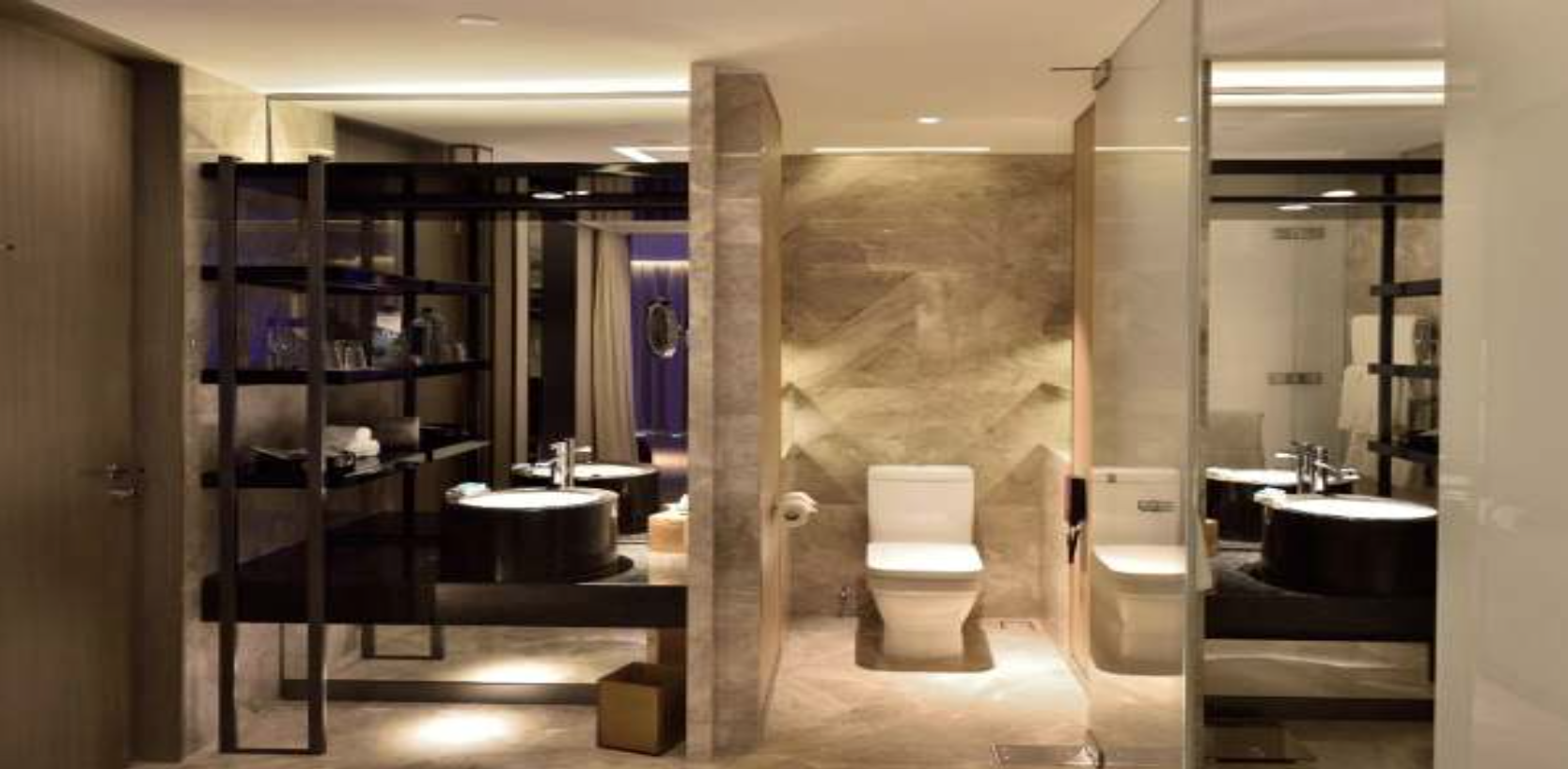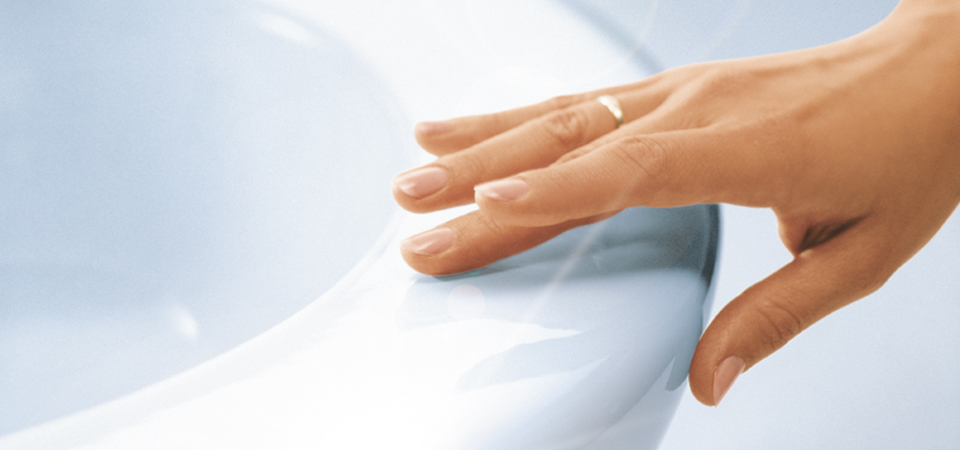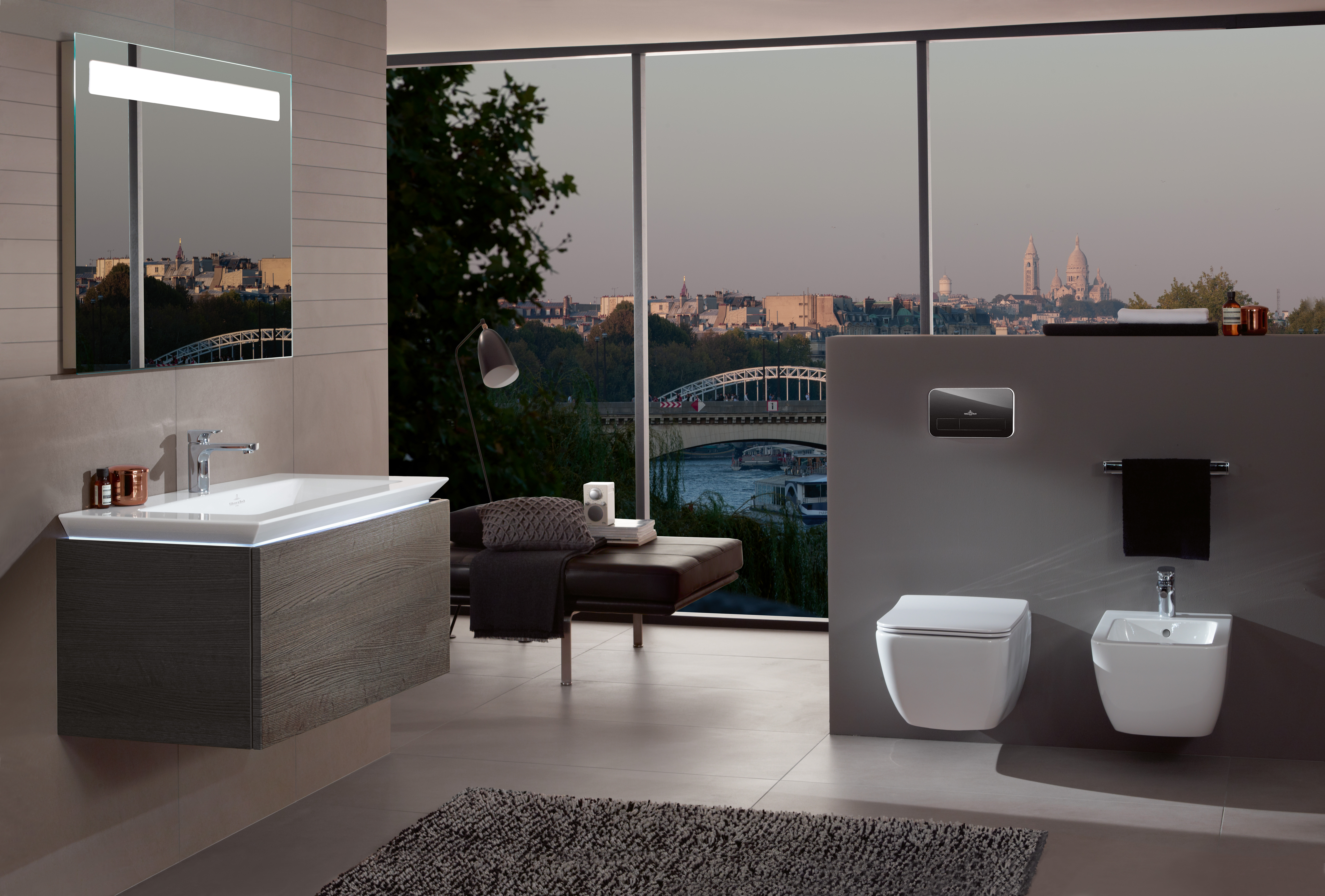Architects are always learning. This is due both to their own inherent curiosity and to the legal mandates of profession, which require architects to complete a number of Continuing Education Units each year in order to maintain their license. While some may see this as a nuisance, here at Architizer we view continuing education as an opportunity to re-examine practice from the bottom up. That’s why we are always excited to see continuing education units designed by innovative companies such as Villeroy & Boch, a giant of the ceramics industry and a key purveyor of knowledge in its field.
“Beautiful Bathroom Design for Easy Maintenance and Superior Hygiene” is an online course designed by Villeroy & Boch that is aimed at architects designing bathrooms for hotels. The goal is to help architects learn to approach bathroom design from the standpoint of functionality, creating spaces that can be cleaned efficiently and withstand a high volume of usage.
“The cleanliness of a hotel guestroom bathroom directly impacts a hotel’s profitability, by its influence on customer satisfaction and hotel image,” explains Villeroy & Boch. “Designers should not only consider aesthetics but also the selection of finishes and fixtures that allow for faster, more cost effective sanitation.”

Via Villeroy & Boch
The online course examines how clean hotel bathrooms aid profitability and customer satisfaction, not to mention public health. It goes in depth about issues such as threats of infection, and identifies the fixtures that both improve sanitation and minimize labor. This is architecture at its most pragmatic and idealistic, approaching the topic of bathroom design with an eye toward maximizing efficiency, health and overall wellbeing. Villeroy & Boch’s German compatriots, the Bauhaus, would be proud.
The course is split into four sections and finishes with a test that allows users to immediately evaluate their proficiency with the material. The entire program is organized in a logical manner, with each detail tied to the overall goals of the lesson, aiding recall and ensuring that your time is well spent.
The first section is titled “The Value of Cleanliness.” At the outset, this seems self-explanatory, but it’s actually quite nuanced, even from a vocabulary standpoint. The lesson opens by marking a distinction between the words “clean” and “sanitary.” While people associate the appearance of cleanliness with sanitation, a “clean” bathroom is not always sanitary, and a sanitary bathroom might not always look clean.

On Villeroy & Boch’s CeramicPlus surface, Water forms droplets that flow off into the outlet, taking residues, such as limescale and dirt, with them; image via Villeory & Boch
As a designer, one must keep both vectors in mind. The customer is entitled to a sanitary bathroom; he or she will evaluate this, in part, based on how clean it appears. The lesson cites a number of studies that indicate that the cleanliness of hotel bathrooms has a long-term impact on customer satisfaction and long-term brand health. “Clean Bathrooms are Good Marketing,” reads one succinct chapter heading.
The third part of the course, “Hotels: An Important Partner in Public Health,” shifts the focus from cleanliness to sanitation. “Visual inspection may satisfy requirements for positive image and customer satisfaction, but a real health risk remains,” the lesson explains. “Surfaces can be contaminated with invisible microorganisms, and infectious diseases acquired from touching those surfaces.”
Alongside the business imperative to keep bathrooms looking clean, hotel proprietors are ethically obligated to ensure bathroom sanitation and by extension public health. This isn’t just an abstraction. Hotels host a transient population that carry diseases from all over the world, and hotel sanitation can play a crucial role in stopping outbreaks of Legionnaire’s Disease, Severe Acute Respiratory Syndrome (SARS), Norovirus and more. What’s more, many of the pathogens that cause these diseases can be spread by housekeeping as they move from room to room. For this reason it is imperative that housekeeping staff members follow proper protocol. It is not enough for bathrooms to look clean, they must be disinfected as well.

Via Villeroy & Boch
The final chapter of the unit focuses on what architects and designers can do to ensure that cleanliness and sanitation standards are maintained. This is where the actionable tips come in. From the cleanliness standpoint, Villeroy & Boch advises architects to stick to light-colored, non-porous surface materials, which stave off stains and are known to give off an impression of cleanliness to guests. For plumbing fixtures, models with “easy clean” coatings are essential, as other types of coatings become worn down over time, leaving fixtures open to discoloration. Bright lighting, too, is a must, as customers often associate dim lighting with a lack of cleanliness.
When it comes to sanitation, Villeroy & Boch recommends a number of antimicrobial glazes for ceramic, glass and tile. These are crucial for preventing the type of disease transmission that too often plagues hotel bathrooms. Wall hung toilets are also recommended, as it is much easier for hotel staff to clean underneath them. Indeed, there are a number of toilet design features, including open rim models, that are much easier to clean in an efficient manner than standard designs. When housekeeping staff are cleaning dozens of rooms per day, efficiency is crucial to ensure effectiveness. For this reason, miniature metallic accessories such as trays and toiletry holders are not recommended, as they are time consuming to clean.
These tips are only scratching the surface of what is included in the unit, which provides a number of surprising, counter-intuitive insights into how designers and architects can help ensure public health in hotel bathrooms. “We may consider the maintenance of a hotel bathroom and its level of cleanliness as falling solely on the shoulders of the hotel cleaning staff, but the designers’ initial choices of layout, fixtures and finishes can significantly influence cleanliness, sanitation, and labor costs,” the lesson concludes.
Click here to sign up for Villeroy & Boch’s CEU course now, and visit the brand’s profile for a complete selection of their latest bathroom products.



